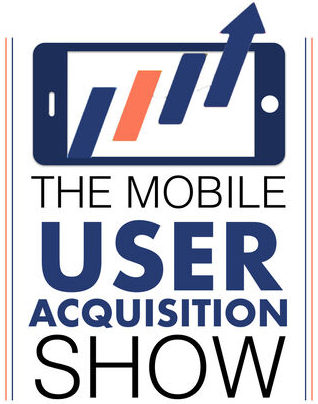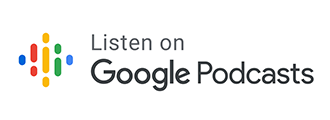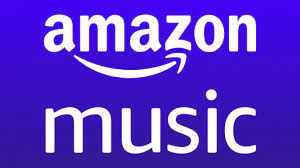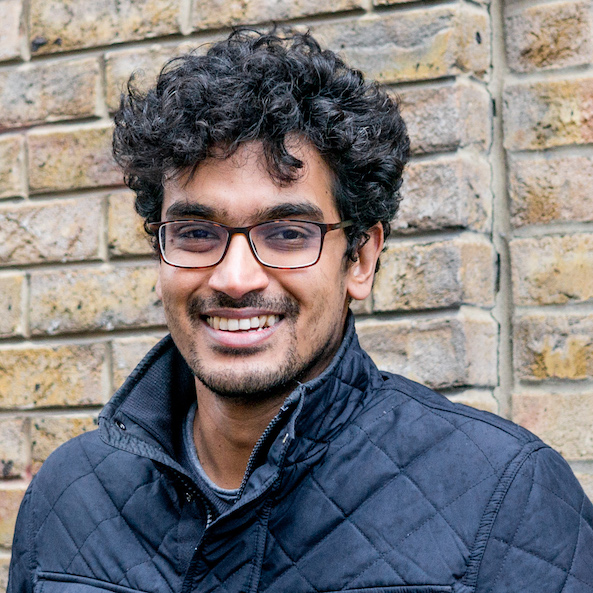
Our guest today is Govind Balakrishnan, CEO and cofounder of the audio journalism app Curio. In our conversation today, we talk about how Curio kick-started growth in a genre that many thought lent itself to very low user engagement.
Govind tells us the various hypotheses Curio cycled through to optimize their user onboarding, and how they focused on serving user goals to drive habit formation. He also talks about Curio’s relationships with stakeholders; right from Apple to investors and subscribers just as well.
In this wide-ranging conversation, we talk about how Curio drove massive growth in the audio space – but the lessons are universally applicable for breaking into and pioneering growth in any new category.
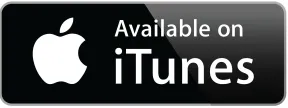
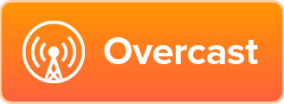

ABOUT GOVIND: LinkedIn | Twitter | Curio
ABOUT ROCKETSHIP HQ: Website | LinkedIn | Twitter | YouTube
KEY HIGHLIGHTS
🎶 All audio is not synonymous with podcasting
🏋️♂️ What are the jobs that Curio does for users?
⏰ Time shifting in audio consumption
🤩 Users of your product are your best advocates
🤔 The tradeoff between choice and discoverability
📋 People appreciate clarity in terms and conditions
🛣️ How to build a pathway for users to experience products
📡 How to identify non-obvious habit formation signals
☯️ Activation and revenue are connected but require different ways of thinking
🧘 The three dimensions of content that resonate
KEY QUOTES
User engagement on audio is unique
We felt strongly that the visual medium was so optimized for superficial consumption and short attention spans that there was an innate need in people and a desire in people to go deeper and build meaningful connections. That is something we’ve seen at Curio; people listen to us for often 45 minutes per session, which is perhaps about 10-20 times what people spend on a newspaper or a magazine.
We started with user motivation
The thing that we realized was that there was a huge pent-up demand in people for self development and for inspiration. We said, you know what, journalism—not daily news but really good thoughtful journalism—is a real engine to convert into opportunities for self development and inspiration.
One of the ways Curio was inspired
One of the inspirations for us was actually a quote which Apple used from Alan Kay, in which he says: “Those who are serious about software, make their own hardware.” And those who are serious about content, create their own experiences.
The different types of engagement
With people, particularly when it comes to audio, there’s active and passive engagement, but there’s also time shifting that happens. When people choose what to listen to is not when people listen.
Product users are the best advocates
Our evangelists—our investors, subscribers, Apple, everyone—have fundamentally come back to them being users of the product, and whether the product itself has added a lot of value to their life. Even amongst the people we speak to at Apple, even when we were very small, a lot of them used the product actually, and got a lot of value out of it. Even though we were small—just two people sitting in a basement in London—the fact is that people used the product; even some of our investors.
Users prefer honesty
Quite early on, we had a very traditional flow: You would sign up to the app, and then you would get shown a subscription pop-up at some point. One of the things that we did was, we delayed the subscription pop-up. We said: “Ok, you know what? Just sign up, come in, check out the product, and then the subscription pop up comes up.” Essentially, our conversions fell by about 40%, because it was much more preferable to actually be upfront and straight with people about subscriptions.
The non-obvious signals for habit formation
We were talking to one of our investors, who worked at YouTube in the early days, and he was saying that early on in YouTube, the point of activation was getting people to watch videos. But as the audience started developing, the audience started developing, people started growing, and you started broadening out the base, watching an entire video was quite a high barrier for people. Whereas subscribing to a channel, for example, was a much easier, lower commitment, yet signaling habit formation. I think that is a great example of how when we are thinking of hard activation, which is to say, habit formation—obviously, listening to the tracks is the best form of hard activation, but there might be other signals as well.
Multiple pathways to hard activation
Someone might say: “You know what? I want to test this product. I’m going to make sure I build a habit, then I’ll pay for it.” And there’s a pathway for that. But equally, people might say: “You know what? I want to project this future for myself , and I want to take the chance and I will find my way to get there.”
Both of these happen, and it’s not just for us.
Insights are surfaced through constant experimentation
We are testing out quite a bit in terms of premium features: Are there softer points? Is the best free thing to give, tracks? Is it actually that you might be able to add things to a queue, or you might be able to time shift? How valuable is time shifting versus listening now? Things like that.
The dimensions of content
We think of content across three dimensions which are: global content that can travel globally; local content that can travel locally; and local content that can travel globally.
FULL TRANSCRIPT BELOWShamanth: I’m very excited to welcome Govind Balakrishnan to The Mobile User Acquisition Show. Govind, welcome to the show!
Govind: Thank you so much. It’s great to be here!
Shamanth: It’s wonderful having you! You and I first met 18 or 19 years ago and it’s crazy how our paths crossed so many years later. And really, our paths crossed because I noticed you guys are getting featured all the time by Apple—I think you guys have gotten featured like 200 or 300 times—and I remember being very excited for all of the work you guys are doing.
You’ve certainly continued to grow, certainly continued to scale, and continued to do impressive work, especially in a space that, as we will talk about, has its challenges. It’s not a space you would intuitively expect to see clear, viral growth. So I’m excited for all of those reasons to talk to you today. So welcome to the show!
Govind: It’s great to be here, Shamanth. As you say, it’s been a long, long time, we have known one another. And it’s an absolute pleasure to speak here.
Shamanth: Absolutely. I briefly spoke about some of the inherent challenges of running an audio-only app, and the last time we spoke, you said that when you started everybody was like: “Nobody’s gonna listen to things. Even the biggest publishers in the world have only a couple of minutes per session per day on their websites—we are not even talking audio just now. Given audio is very immersive and sequential, it’s going to be challenging.”
That’s what everybody said at the time. So when you got started out, what were some of the hypotheses you had that audio experiences could overcome a lot of the hurdles that a lot of people said could be problematic with audio?
Govind: That’s a great question, Shamanth. To be honest, I think sometimes looking back even 3-4 years, one forgets how different a space audio was. One of the big hypotheses for us to prove was, in fact, that there is something in audio; that audio is the future, it’s not the past.
If you look at 2017, people thought audio was a subset of podcasting. Podcasting was a $300 million business at that time, and it was a very different space, and nobody was very clear about what the future trends in audio would be.
Our hypothesis was three things. First,
we felt strongly that the visual medium was so optimized for superficial consumption and short attention spans that there was an innate need in people and a desire in people to go deeper and build meaningful connections. That is something we’ve seen at Curio; people listen to us for often 45 minutes per session, which is perhaps about 10-20 times what people spend on a newspaper or a magazine.
The second one is that nobody felt that people would be willing to pay for audio, partly because everyone said that there are all these free podcasts out there. Why would anyone pay for a product? And our hypothesis was that people would pay for convenience, quality, curation—all of those things. Today, Calm has a valuation that’s twice the size of the US podcast market and 60% of our subscribers are not podcast listeners, so you can see that the market is very different. Finally, there was the thing that audio is suited for a much older demographic, and that young people would not really get into audio. We could not be more wrong, because today most of our subscribers are 25-34 years old, mostly women, and quite global.
Shamanth: Yeah, certainly. Like you said, audio is not the same as podcasts, and the people who consume audio are very different in many ways. I would love to unpack some of the things you said about the kind of engagement you guys are seeing. I know you said that a lot of your listeners spend around 45 minutes a day on audio. In some ways that’s comparable to what they would spend on something like Netflix or an entertainment medium, more so than a newsbite sort of medium. What were some of the key design decisions from your end that contributed to that sort of engagement level?
Govind: I think it’s a very good question, Shamanth. What we went back to was: “What is the motivation? What are the jobs that we’re doing for people?”
The thing that we realized was that there was a huge pent-up demand in people for self development and for inspiration. We said, you know what, journalism—not daily news but really good thoughtful journalism—is a real engine to convert into opportunities for self development and inspiration.
So that’s where this whole thing began.
The other thing that’s a big trend, which fed into our design process, is that, by some accounts, people multitask for seven hours a day because time is becoming a currency. It may not be seven hours in one go—obviously it’s not—but people find interstitial time throughout the day and they add it all up.
So, when we went back to building the product,
one of the inspirations for us was actually a quote which Apple used from Alan Kay, in which he says: “Those who are serious about software, make their own hardware.” And those who are serious about content, create their own experiences.
So we went back saying we want really high quality content, extremely high levels of curation. We select the publishers, whether it’s the Wall Street Journal, Wired, etc. We have a lot of data and a lot of editors who go out and find the best journalists and content. Another thing was convenience, because
with people, particularly when it comes to audio, there’s active and passive engagement, but there’s also time shifting that happens. When people choose what to listen to is not when people listen.
All of this fed into that. We were also quite fortunate to be working quite closely with Apple ahead of iOS 12, iOS 13, and iOS 14. We’ve worked with them in close proximity, and one of the things that they’ve really fed into us is the idea of creating occasions and owning them. So, when we worked with them on the widget, we really built occasions for people. And that is really the nub of how we went about designing Curio.
Shamanth: I would love to understand a bit more about working with Apple and what that looks like. How you guys started, but also what other developers could do to build that sort of a relationship? I also want to ask that because for a lot of developers, especially when they’re small and starting out, they tend to think: “Why would Apple talk to us?” So I would love to hear from your perspective on how that relationship got started and how you guys built it up.
Govind: To be honest, even for us, the whole thing has been: why would publishers speak to us? Why would Apple speak to us? Why would our subscribers speak to us? It’s been an interesting journey.
It goes back to—one of the things at least—our purpose, which is what we constantly reiterate. We want to build empathy in the world through wonder, and translating journalism into opportunities for self development and improvement is the way we did that. That’s been our North Star from the beginning.
So honestly,
our evangelists—our investors, subscribers, Apple, everyone—have fundamentally come back to them being users of the product, and whether the product itself has added a lot of value to their life. Even amongst the people we speak to at Apple, even when we were very small, a lot of them used the product actually, and got a lot of value out of it. Even though we were small—just two people sitting in a basement in London—the fact is that people used the product; even some of our investors.
We’ve got Horizons, who invested in Spotify early on, invested in us because they used the product. My advice is really, if you can get people using your product, then you don’t need to talk about it.
Shamanth: It also speaks to the fact that your product meets a very unique need. I would attribute to the fact that all these folks are using your product itself, and I think that that makes talking about it a lot easier.
You spoke about how you guys started with the hypothesis that users want self development, they want to improve themselves. From what you’re saying, it also sounds like you guys spent, and continue to spend, a lot of time and effort on curation and on surfacing the right content to the users. Talk to me about why and how that was an intentional decision for you guys, because you would think that one possible direction could have been: “We have all these partnerships, let’s just put it out there on the app. Users will find what they will.” versus being more intentional and deliberate about curation. Tell me more about how and why that was an intentional direction.
Govind: Couple of things, Shamanth. Like I said, we went back to the jobs that people wanted to get done—and this goes back to the publishers. Take a publisher like The Economist or the Wall Street Journal, they have so much amazing content. They produce a book’s worth of content a day, so they can serve many jobs. We distilled it down to three things for us: people came to us to understand the world; people came to us for self improvement and inspiration; and people came to us for smart escape.
We had to create that experience within the app. That was very important. Even, today, the app is very geared towards the early adopters, because a large part of our acquisition in the early days was because people would come to us from the publishers themselves. The Financial Times and Wired would host audio from Curio, and people would come in. So in a way, people were already primed for the product and the sort of content that they would get—and they got that on Curio.
So we could index down on the cognitive load that we would add by reducing choice. Now, as we start growing and crossing the chasm to a much more mainstream audience, we have to start dialing that up. Because, by some accounts, the ideal number of choices people like is about 8-10 choices. Anything less, they feel they haven’t got enough and anything more, it’s too much. I think it’s an area of constant experimentation but that’s really where we want to get to.
Shamanth: Right, the way you’re saying it, it’s about making the number of choices somewhat manageable for users. Is there a trade-off that you think of with that: “Oh, We can give people fewer choices, but maybe those fewer choices are totally not interesting to them?” Is that a trade-off as well?
Govind: That’s exactly right, Shamanth. That is why we have to constantly experiment. In a way—you’re an aeronautical engineer, so you’ll know this—it’s like we’re trying to aim a missile at a moving target. That’s really what this is. Because people—you, yourself, are a different person on a Monday morning to a Wednesday evening to a Sunday afternoon. And the thing is, if you go back to the jobs—understand the world, self improvement, smart escape—you cycle through mood states, so it’s very important that we are able to serve up the right content to the right audience in the right context and all of that is changing. Effectively, there aren’t that many parameters, but even within those parameters there is a need to constantly experiment. I think that would be my takeaway from this.
Shamanth: What have been some of the experiments that you guys have run that haven’t been successful?
Govind: There have been quite a few, Shamanth. I know some of the points of interest are around onboarding, so I’ll talk to that.
Quite early on, we had a very traditional flow: You would sign up to the app, and then you would get shown a subscription pop-up at some point. One of the things that we did was, we delayed the subscription pop-up. We said: “Ok, you know what? Just sign up, come in, check out the product, and then the subscription pop up comes up.” Essentially, our conversions fell by about 40%, because it was much more preferable to actually be upfront and straight with people about subscriptions.
In fact, people appreciated that a lot.
The second one: our thesis, similarly, was that when people do subscribe or when they’re shown the price, the last thing they want to read is lots of terms and conditions. So we took it off. Again, conversions fell, not by 40%, but they did fall. So the learning there was that it wasn’t that people wanted to read the fine print; it was more that people wanted clarity in terms of: “OK, when am I going to get billed?” and “When can I opt out and I will not get billed?” I think that has been a big game changer for us.
The third one is there is definitely a relationship between someone who comes, builds a habit to the product, and becomes a subscriber. That’s the right way to do this. But, often, I think what we find is that people are willing to take a chance on a product—particularly if they’re coming from a good channel of acquisition—and that essentially means that a lot of people are willing to subscribe and then try it out.There’s an inversion of that logic, which was also a learning for us.
Shamanth: They treat it as test driving the product.
Govind: It’s definitely test driving, Shamanth, but it’s also a little bit more than that when people come to products like this. We speak to a lot of our subscribers, and one of the things we get told is that people project a future version of themselves. Particularly, if it’s about inspiration and self development. You are in a very alive and energized frame of mind when you come into products so you are sold on them. Particularly, given the weight of the partnerships we have, the sort of content we have, it’s very clear that there is value, so people are much more comfortable saying: “OK, I am predicting my future self, so I’m signing up and subscribing; and I’ll build the habit later.”
Shamanth: Right, that’s a very interesting way of looking at why people use the products they do. You’re right, they want to be a different person in a few months and that’s essentially what they’re looking at this product for.
Govind, the last time we spoke, one of the phrases you used was: “building a pathway for users to experience the product, so they can actually see the value.”I’m curious if you can elaborate on what the thinking has been in that regard, but also what the components of this pathway have been for you guys?
Govind: Like I said Shamanth, earlier on, we had a traditional pathway. So you would come into the product and then you would have to sign up, which means you create an account and then you have the subscription pop up that comes up. If you want you can dismiss it and get access to a free tier.
Now, while this was fine, I think one of the things that we realized is that there’s no point in taking people to a garden and not letting them walk on the lawn. There is no point in doing that. But equally, you don’t want to remove all the fences. So, what we did was we removed sign up—which was asking for information without actually giving people anything. Secondly, we were very, very upfront about the fact that this is eventually a paid product, and people really appreciated that honesty. If they weren’t willing to pay yet, if they weren’t convinced, they could take a look, and go and experience a product without any commitments or any personal data being given. That was really what helped.
Also, in terms of value, and going back to something that’s quite unique to audio, people time shift. Often people create queues, create playlists, and download tracks, but they listen later. So we removed sign up, we were generous but we were honest with people, and then we had them time shift. This was really the pathway that led to conviction-building.
Shamanth: Right, I can see why every one of those components is critical. You don’t want to just give them a paywall and say: “If you’re not paying, that’s the end of it. Go back.” I certainly know products that do that. It’s just not a good experience. And from what you’re saying, it’s also about the ability to be able to time shift and just save for later, so to speak.
Govind: Correct. I’d be lying, Shamanth, if I said all of this was obvious to us at the onset. It sounds obvious in hindsight, but we had to experiment a lot to figure all of this out.
Shamanth: Certainly. Also a phrase that you’ve used has been “hard activation.” So, tell me more about what that means and how that informs experimentation, product decisions, or anything else?
Govind: As you know, and perhaps your audience will know as well, hard activation is just a fancy way of saying habit formation. We think of this a lot, and we think of it in terms of both what are the signals of hard activation and what is the point of hard activation.
In the past, what we found is that—and this is not rocket science—if anyone listened to 5-6 tracks on Curio, the likelihood of them listening to a 7th or 8th track was over 95%. So essentially, people achieve a certain degree of escape velocity, once the product has formed the habit. Then, you are able to cohort audiences in terms of the various points of activation, and looking to nudge them; or nudge them less.
We were talking to one of our investors, who worked at YouTube in the early days, and he was saying that early on in YouTube, the point of activation was getting people to watch videos. But as the audience started developing, the audience started developing, people started growing, and you started broadening out the base, watching an entire video was quite a high barrier for people. Whereas subscribing to a channel, for example, was a much easier, lower commitment, yet signaling habit formation. I think that is a great example of how when we are thinking of hard activation, which is to say, habit formation—obviously, listening to the tracks is the best form of hard activation, but there might be other signals as well.
As we’ve built up a far more sophisticated data infrastructure, we’re able to turn a lot of the algorithms back on the signals, and find out what are the signals that actually turn the dial in terms of habit formation. And you can take it one step further and say lifetime value.
Shamanth: I like how you underscore that that signal can be different at different points of a product life cycle, or a user’s life cycle for that matter. That’s interesting. Do you find there’s a conflict between activation and revenue?
Govind: I don’t think they’re at odds here, but I think they need to be thought of differently. That was a big lesson for us. Going back to what I said earlier, the mindset with which someone comes in can be very different.
Someone might say: “You know what? I want to test this product. I’m going to make sure I build a habit, then I’ll pay for it.” And there’s a pathway for that. But equally, people might say: “You know what? I want to project this future for myself , and I want to take the chance and I will find my way to get there.” Both of these happen, and it’s not just for us.
I’ve spoken to some very big—not just subscription apps—but subscription businesses, which are in the tens of billions of dollars, and again for them the way to think about the habit formation is quite different to the subscriptions. For example, there are products that heavily discount subscriptions for one year, focus purely on habit formation, and have very sophisticated ideas of signals. For example, a big publication might say: “Is someone who comes, looks at the news, and goes away, less or more valuable than someone who comes, looks at the news, but also looks at another section? Is time spent the right signal?” I would say that both of them are worlds in themselves. They do intersect, but they need to be thought of slightly differently.
Shamanth: Yeah, they’re two different pathways; they’re two different kinds of user jobs, to use the phrasing that you used earlier. Interesting. I know you briefly alluded to the paywall, and the paywall experience. What were some of the other paywall experiences that you guys tested? Were there key learnings from testing around the paywall that you guys have?
Govind: Absolutely, Shamanth. The usual tests we run are, for example, pricing tests. It’ll come as no surprise to anyone that the question is not one of price, it’s a question of value. People are relatively—I wouldn’t say insensitive—but they are genuinely not as fussed about price, as: “Am I getting value out of this product?” In fact, there’s an inverse correlation. Sometimes, you reduce price, your conversions fall because people think: “Hang on a second, this is not as valuable.” Needless to say, this needs constant experimentation. I keep coming back to that.
The second one is, even in terms of the free tier, we started with 10 free tracks—not because of any sort of scientific learning, but because all the publications, such as the New York Times, give you 10 free articles. So we started with that. There was some validity in that, because the hard activation point for some of our users was 5-6 tracks. So we thought, okay, let’s give people 5-6 tracks and that’s largely worked for us. But equally,
we are testing out quite a bit in terms of premium features: Are there softer points? Is the best free thing to give, tracks? Is it actually that you might be able to add things to a queue, or you might be able to time shift? How valuable is time shifting versus listening now? Things like that.
Because the context in which you find it: perhaps you’re browsing somewhere, and someone sent you a message saying “Check this product out” but you’re sitting on the sofa, you’re watching Netflix—that’s not when you’re going to put on your earphones and listen.
Shamanth: Yeah totally. Something you also mentioned was about the publications that you guys partner with for the content. So, seen in a certain light, you guys are a content business, as much as a product business, and a lot of the content can be labor-intensive. Even if you’re partnering with the publishers, it is labor-intensive for them. Can you talk to me about your content acquisition strategy? How you think about acquiring content and forming those partnerships? Because, clearly in many ways, you guys are a marketplace between the content and the consumption, so it’s not enough if all you do is just bring in the users—because you do have to bring in enough content. Talk to me about what that content acquisition strategy looks like for you guys.
Govind: It’s a great question, Shamanth. I’ve often thought about subscription businesses, content, tech and wondered which space we are in. If you look at the biggest subscription businesses in the world, Netflix, Spotify, etc. they’re all at some level content businesses. It’s quite an interesting observation. But I think for us, content acquisition can and need not be as labor-intensive. That’s the secret here, which is that the opportunity to partner, align and find incentives that are in alignment with other entities that are also in the same space has been invaluable for us. This has happened in the television space since forever. The Long Short was produced by ESPN and Netflix. Co-productions happen all the time and co-productions happen for a reason, because both bring strengths to the table, but take the pain out of content production. That’s one way of doing it.
Then, you’re thinking about—I know I keep talking about jobs to be done—really, your content has to serve the jobs to be done. You need to get maximum bang for your buck in terms of content.
We think of content across three dimensions which are: global content that can travel globally; local content that can travel locally; and local content that can travel globally.
All of this is very important.
On top of that, you overlay a production model where you are co-producing content: some of it is original programming some of it is directly in conjunction with creators, whether it is journalists or someone else. So you’re able to build a rich tapestry of high quality content sourcing.
But ultimately, Shamanth, the product itself—I keep coming back to that quote: “Those who are serious about content, build their own products.” Ultimately, the product is a vehicle for people in whatever state of mind they are in, whatever job they want done, to access the widest breadth and the richest set of content. That’s what Curio really is because we turn journalism into opportunities for self development and improvement, etc, and how we are easing that pathway for a maximum number of people. It’s as simple as that.
Shamanth: Yeah definitely. Lots of food for thought. Out of curiosity, when we talk about content, a lot of publishers’ content isn’t in audio form, so was it challenging when you guys were starting out? And is it challenging now?
Govind: It goes back to what I said about our relationships—investors, Apple, or content producers. Ultimately, you align the incentives, and you create a product that they themselves like to use. In the case of the publishers, what was interesting was that there was a win-win model, because publishers care about reaching new audiences. Our audience is quite young, has more women, and is global. It is about engagement, which audio is able to increase by an order of magnitude. And of course, revenue—new revenue streams.
I led strategy for BBC News, and I know how hard it is for an organization that’s focused on one medium to pivot to another medium overnight. It’s much better to have partners whose incentives are aligned. We win if our partners win, so it adds up to a nice ecosystem. Regardless of whether you’re big or small—and this is credit to our partners—they saw the opportunity and grabbed it. That’s what we have been very fortunate with.
Shamanth: So from what you’re saying, your partners want distribution; it’s not easy for them to get audio distribution. It’s not easy for a media company that isn’t audio specialized to get audio distribution and you guys are providing that avenue.
Govind: I would say it’s complementary, Shamanth. Obviously they have podcasts and all of that, but I think the way we think of what the audio space is—and I think this is where we are going on a journey together. I often say if someone from 1930 came and saw Twitter, they wouldn’t understand it; but if they listen to a podcast, they would say it’s a radio show. Looking forward, with our partners, I think the opportunity that we see is in the future, which is co-production, perhaps creating AirPods-first content, or more conversational interactions. That is really where the opportunity is. And to create bundled experiences.
Shamanth: Govind, this has been very instructive; lots of food for thought. Definitely, I think there’s been a wide ranging conversation around an area that I don’t think has been explored in a lot of depth, especially since you guys are pioneering a lot of this. So it is not just around mobile apps, but audio-driven mobile. Certainly a lot of exciting times ahead.
We’re coming up on time, so this is perhaps a good place for us to start to wrap, Govind. Before we do that, can you tell folks how they can find out more about everything you guys do?
Govind: Oh, absolutely! Just go to the App Store or the Play Store and search for Curio. Or you can go to our website curio [dot] io or follow us on Twitter, Instagram, etc.
Shamanth: Cool. We will link to all of those in the show notes. Govind, it’s been a pleasure and honor having you on the show. Thank you for being on the Mobile User Acquisition Show!
Govind: Likewise, Shamanth. Thank you so much for having me. It’s been an absolute pleasure.
A REQUEST BEFORE YOU GO
I have a very important favor to ask, which as those of you who know me know I don’t do often. If you get any pleasure or inspiration from this episode, could you PLEASE leave a review on your favorite podcasting platform – be it iTunes, Overcast, Spotify or wherever you get your podcast fix. This podcast is very much a labor of love – and each episode takes many many hours to put together. When you write a review, it will not only be a great deal of encouragement to us, but it will also support getting the word out about the Mobile User Acquisition Show.
Constructive criticism and suggestions for improvement are welcome, whether on podcasting platforms – or by email to shamanth at rocketshiphq.com. We read all reviews & I want to make this podcast better.
Thank you – and I look forward to seeing you with the next episode!
